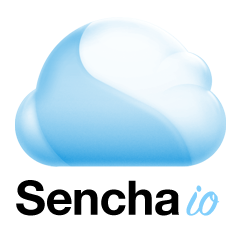Javascript Web app framework provider Sencha is today announcing the public beta launch of Sencha.io, its new HTML5 mobile cloud service. The service will allow Sencha app developers to build “shared experiences” in the browser, without having to write server code or manage hosting.
At launch, Sencha.io will provide a set of cloud services, including Sencha.io Data, Sencha.io Messages, Sencha.io Login and Sencha.io Development. Combined, the new services let developers use just a few lines of Javascript code to store data, send messages to users, listen for messages, deploy apps or login users via Facebook or Twitter.
The suite, which can be thought of somewhat like an iCloud for the Web, is now in open beta. It includes a Sencha.io SDK, plus full API documentation.
Details on the four core services are as follows:
1) Login: This cloud services allows users to log in to applications using Facebook or Twitter accounts or accounts specific to the application.
2) Data: Sencha.io Data let developers store data in the cloud with one line of code in a Sencha Touch application. Data is synchronized across all devices and can be shared between users. Even when a mobile device is offline, applications can still read and write data and Sencha.io Data will transparently sync when the device rejoins the network.
3) Messages: Sencha.io Messages enables users and applications to communicate with each other. For example: notifying a friend it’s their turn to play, or moving an in progress game from your mobile phone from your desktop.
4) Deployment: Sencha.io Deployment lets developers deploy their applications and optimize their application images for various mobile device screen sizes. Deployment includes a management portal that allows developers to manage versions of their applications and a fully sandboxed development environment for testing and collaboration.
More details on the services are provided on Sencha’s blog. Interested developers can go to htp://developer.sencha.io to create a team and download the SDK. Those with an existing Sencha ID are already registered. The company also notes that those apps using Sencha’s Sync and Src services will continue to work. Sync has now become a part of Data and Src is now a part of Deployment.
